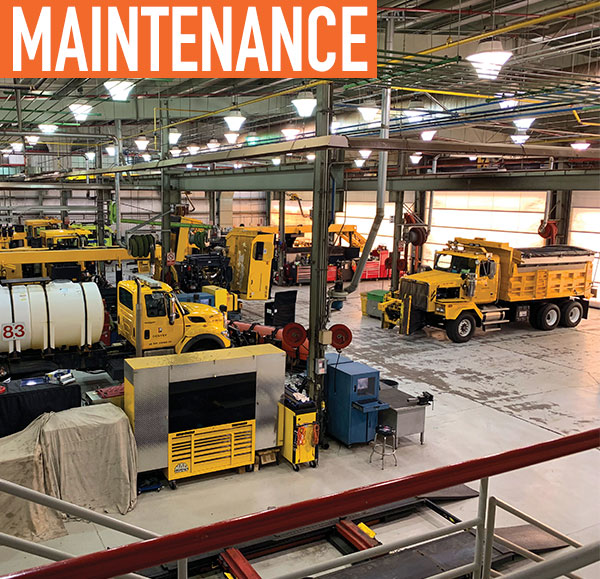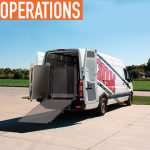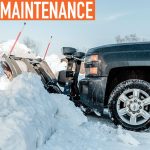As autumn leaves fall and the temperature drops, most of us get our fall and winter wardrobes out of the back of the closet. Those in the maintenance business start thinking much further ahead to winter weather and the necessary maintenance that comes with it. Those in the snowbelt break out the snowplows from their summer slumber. Fluid changes and checklists are the norm.
Let’s be even more forward-thinking today. Let’s think about maintaining your diesel particulate filter (DPF) system.
BEEN HERE BEFORE?
DPF systems are a necessary evil in today’s world to most maintenance facilities. Roughly 80%, possibly more, of the issues most maintenance facilities see on a day-to-day basis is with the DPF regeneration system. Either it’s not performing the auto regeneration function as it should, you don’t have the correct tools required to diagnose the system, or the fleet is so diverse the cost to have a tool for each manufacturer is so astronomical that it outweighs the return on investment (ROI). Then your profits are eaten up by calls to the dealership for a road tech to come out and correct the issue only to run a regeneration for an hour and hand you a $300 bill.

Autel is a leading manufacturer and supplier of professional diagnostic tools, equipment, and accessories in the automotive aftermarket. Consider its diagnostic tools such as the one above to monitor fleet maintenance.
This is especially an issue in the business of snow removal. In most cases, hours of idling build up soot levels in the DPF. Slow speeds and component failure prevent auto regeneration. Next thing you know you have a plugged DPF filter that must be removed for cleaning. And depending on how far it has progressed, possible replacement. That’s not cheap at $2,000-3,500 for a filter. Worse case scenario, it’s a tow bill to the dealer, a diagnosis fee, labor costs, parts, and not to mention the lost revenue. It’s a catch-22.
3 SOLUTIONS
Let’s look at some possible solutions to this issue.
- Decrease idle time.
You would think that would be a perfect solution, but in colder regions temperatures do not allow that for the driver or the equipment. You could install an auxiliary power unit to solve this issue or have your driver carry a cord for his block heater. In cases where long idle times are a factor, ask your customer for an external electrical connection to plug into, creating less soot and making it less likely for a plugged DPF. - Check all components that could prevent an auto regeneration before each trip out.
This is a timely procedure, and in most cases, no one knows what parameters must be met to perform this function. Components that are crucial to this are: proper engine temperature (see your service manual for specific manufacturers), a properly functioning DEF system (no visible leaks or damage to the lines and components), and DEF in the tank (yes, it happens). - Lastly, perform a manual forced regeneration once a week with a diagnostic solution.
In my opinion, this is the most cost-effective option provided you have a diagnostic solution with the proper features and manufacturer diversity for multiple OE fleets. Especially if that diagnostic solution gives you the proper information as well as bidirectional controls to not only perform the regeneration but also effectively test the components in the system for a proper repair.
Examples of this would be prerequisites to run a forced regeneration such as air pressure, TPS position, clutch, or neutral safety switch position, required engine temperature, and (most commonly overlooked) that the engine control module recognizes that the vehicle is parked. More examples include DEF doser valve testing (the soot will not burn away without DEF fuel) and DEF heater testing, which crystallizes at 12 degrees F. A faulty Delta Pressure sensor could lead to incorrect DPF pressures that signal a regen code as well as sensor monitoring output and incorrect sensor inputs from the ECT or the O2 sensors. Finally, the most important attribute is to be able to reset all of the DPF derate lockouts. This narrows the field tremendously if this is the solution you choose.

OEM TOOLS
With the third option, I advise you to choose a diagnostic solution with “OE-like” capabilities. A lot of OE manufactures keep these capabilities “close to the vest,” so to speak. This keeps owners tied to the dealer. There are very few in the aftermarket, maybe one or two, with such capabilities. And you can splurge for the full gambit of OE software.
In most cases the manufacturer of the OE software requires separate laptops specifically for their software. Not to mention the yearly activation fees that can pile up by stacking that software in your shop. To have every OE software in your facility, you can expect to pay tens of thousands of dollars upfront for an initial purchase and thousands to tens of thousands to maintain the software each year just to be able to use it (if you do not pay for updates the tool does not work, and you will be back charged for “skipped” updates). Yet, aftermarket solutions are also available.
AFTERMARKET TOOLS
There are a few options in the aftermarket that do not require you to pay a yearly fee. The caveat here is that the updates cease without activation. This is fine for the fleets that turn over trucks every five years. I advise to do your research and find the best solution with the greatest coverage that maximizes your uptime and ROI. These aftermarket options can range from $4,000 to upwards of $12,000 per tool. But keep in mind the most expensive does not always mean the best. There are many aftermarket tools out there that use terms like “dealer level,” “most comprehensive coverage,” or use the words “many more” to define coverage. If you choose an aftermarket option, ask your distributor to leave the tool with you for a week first and compare.
Following these simple preventive procedures can prevent costly downtime and lost revenue that could cripple your business. Let’s all have a safe and prosperous snow season. Here’s to increased ROI and reduced downtime!
ABOUT THE AUTHOR
Chris Freeman is a 29-year veteran of the medium- and heavy-duty trucks markets. He is an ASE-certified medium/heavy duty master technician. He is also certified in Caterpillar, Cummins, Detroit Diesel, and Navistar Engines. In addition, he has five years’ experience in the medium- and heavy-duty aftermarket software market.
MODERN WORKTRUCK SOLUTIONS:
OCTOBER 2019 ISSUE
Did you enjoy this article?
Subscribe to the FREE Digital Edition of Modern WorkTruck Solutions magazine.





